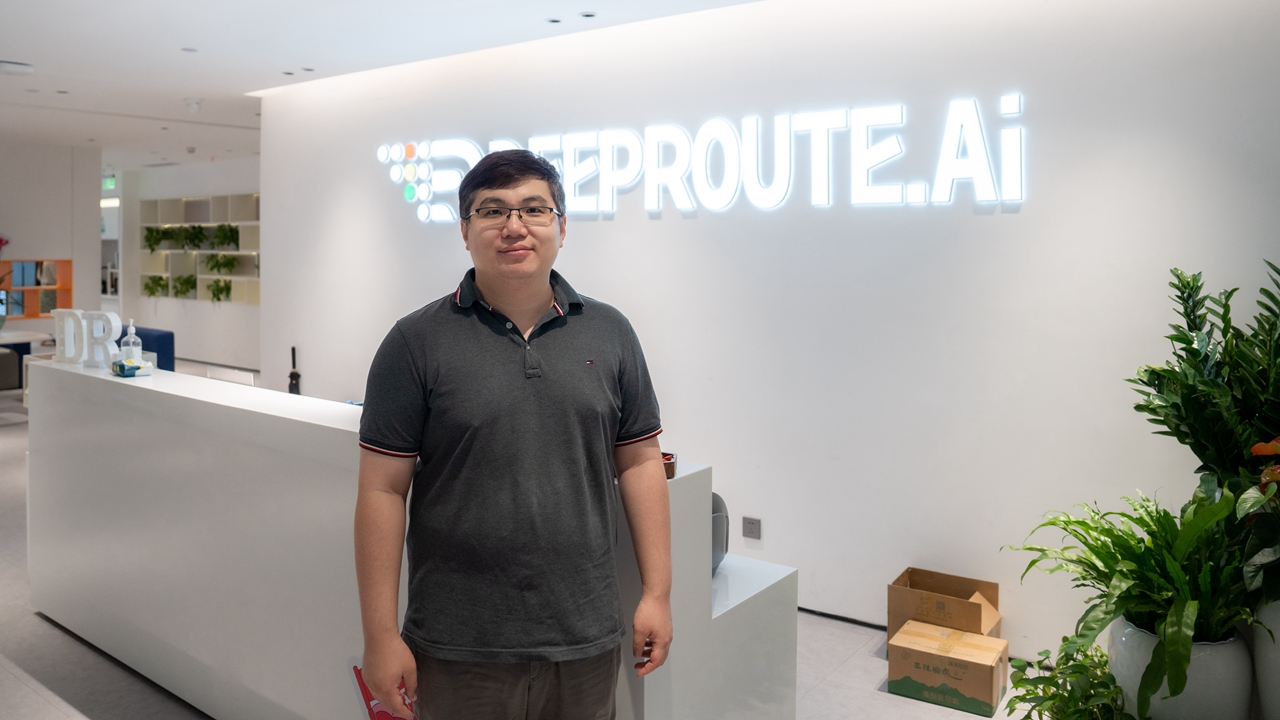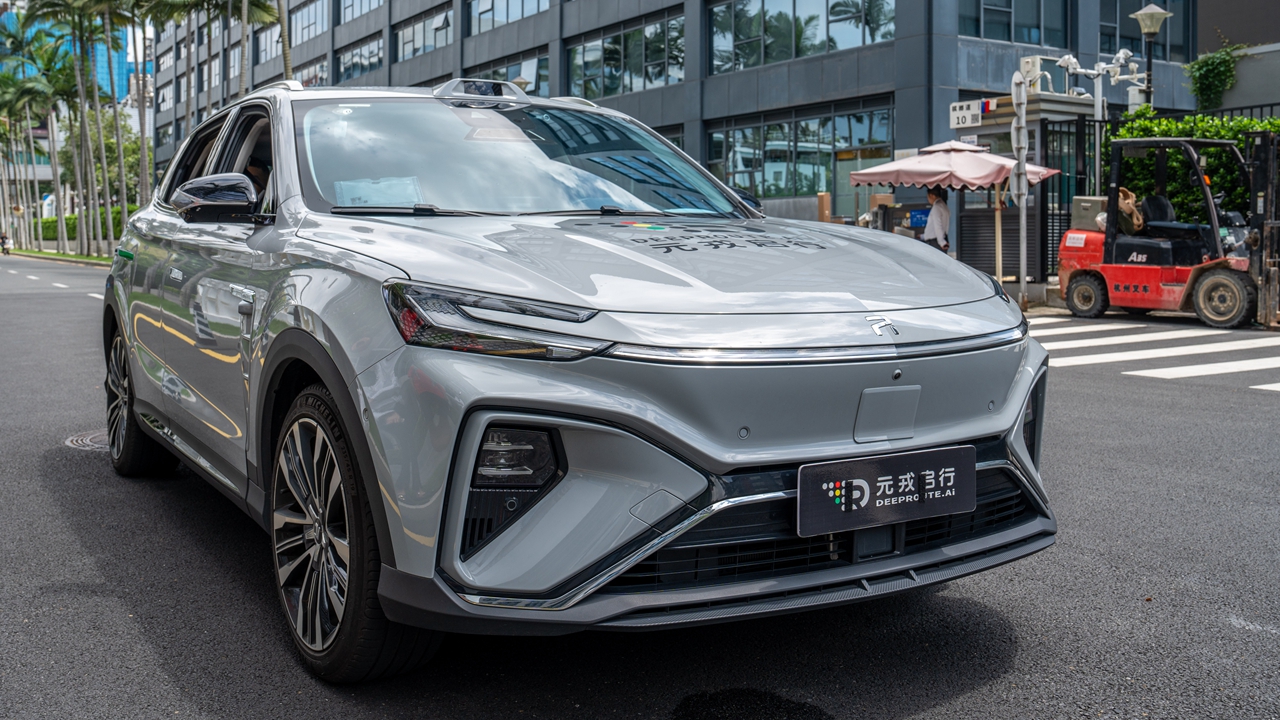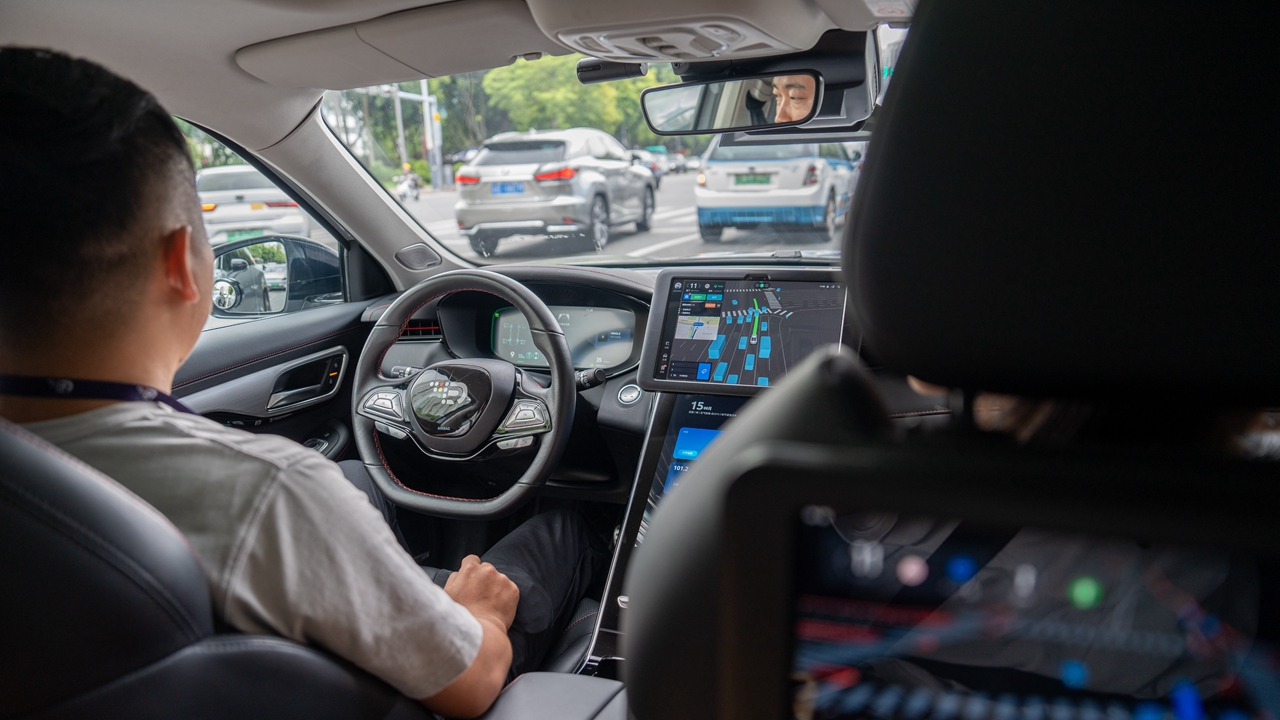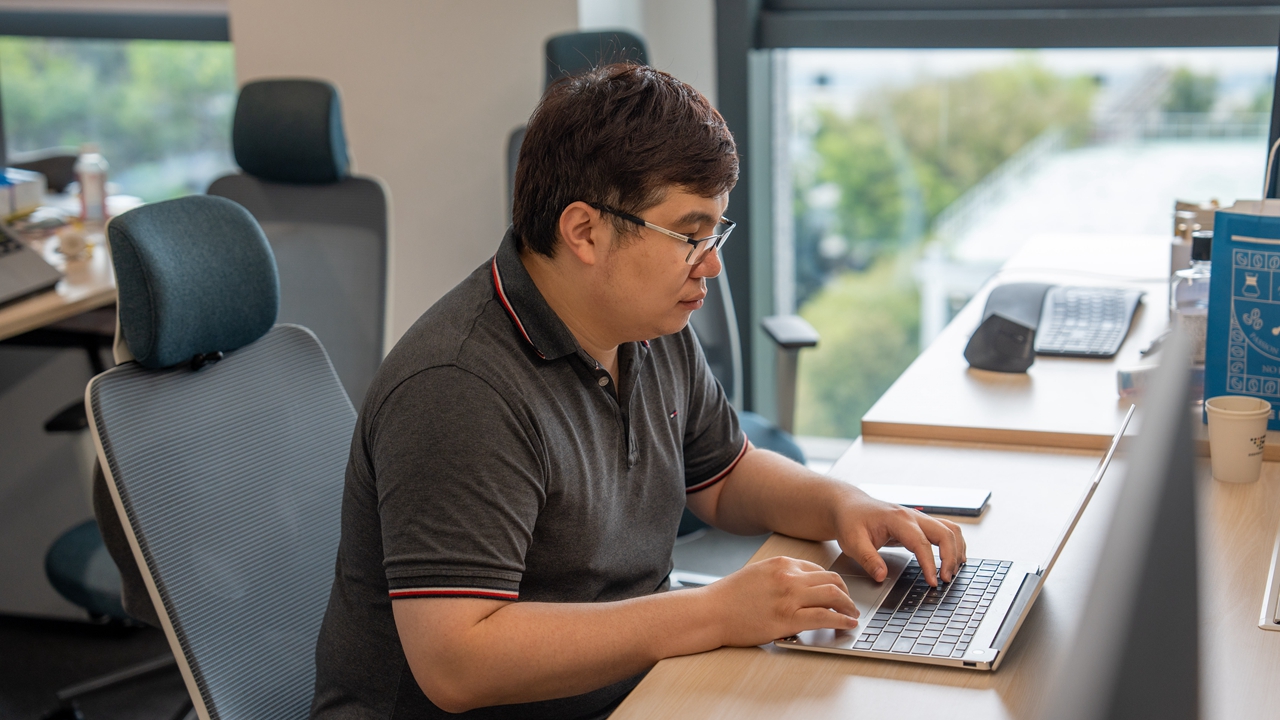Firm leads in HD map-free self-driving solutions
Writer: Chen Xiaochun | Editor: Liu Minxia | From: Shenzhen Daily | Updated: 2023-09-20
Video and photos by Lin Jianping
As the first company in China to offer an autonomous driving solution that does not rely on a high-definition map, Shenzhen-based DeepRoute.ai is undoubtedly a leading force in the autonomous driving industry.
Founded in 2019, the newly emerged high-tech company miraculously enabled autonomous vehicles to depend solely on standard-definition maps (SD maps) within four years.

Liu Xuan, vice president and technology partner of DeepRoute.ai, poses for a photo at the company’s headquarters in Futian District.
Surprisingly, according to Liu Xuan, vice president and technology partner of DeepRoute.ai who had an exclusive interview with Shenzhen Daily, the founding team of this promising enterprise are "youngsters" born in the late 1980s or early 1990s.
Liu, a Tsinghua University graduate, has an impressive resume. After Liu received his Ph.D. at the National University of Singapore, he worked in the U.S. for Google and the Baidu U.S. team. “There (in Silicon Valley), I met Maxwell (Zhou Guang), our CEO; and together with our other partners, we worked on solving autonomous driving problems there.”
Liu explained that autonomous driving is an emerging field unfamiliar to most senior researchers who are accustomed to conventional topics. However, young developers who are equipped with the latest information are keener on studying this area.
Shenzhen: the best option
In 2019, the company was established in Shenzhen. Currently, it’s based in the Shenzhen section of the Hetao Shenzhen-Hong Kong Science and Technology Innovation Cooperation Zone in Futian District, Shenzhen, focusing on the research and application of advanced intelligent driving technology. The company’s founders considered several factors for choosing Shenzhen as their headquarters.
“The first factor is that Shenzhen has a complete supply chain for the automobile and electronics industry, where we can get our products from our suppliers in a short time. Another thing is that Shenzhen has a lot of good developers, both in terms of hardware and software,” Liu said.

A robotaxi of DeepRoute.ai on standby for a ride.
On July 19, 2021, DeepRoute.ai officially launched its robotaxis in Futian CBD. “The government allows us to run robotaxis in Futian District, so we can collect more data to improve our algorithm,” said Liu.
Liu believes that Shenzhen, as the “Silicon Valley of China,” has always been encouraging technology innovations. “Considering all of these things, we believe that Shenzhen is the best option for founding our company.”
Rapid development
Over the past four years, DeepRoute.ai has grown rapidly. It’s the first company to be granted a permit to operate robotaxis in the CBD of downtown Shenzhen.

The safety officer seated in the driver’s seat does not engage in any driving actions throughout the entire trip.
This March, the company unveiled DeepRoute-Driver 3.0, the first HD map-free autonomous driving solution in China, along with two products, namely D-PRO and D-AIR.
The high-end D-PRO contains full features of autonomous driving vehicles such as point-to-point smart driving based on regular maps like Baidu Map or Gaode Map, as well as parking assistance solution like valet parking and assisted parking. D-AIR provides driver assistance, like Autonomous Cruise Control and Lane Center Control.
“The two products we launched in March are the first in China that solely rely on SD maps and the first autonomous driving solution without HD maps in China. We remove dependency on HD maps because it has a lot of drawbacks. HD maps are only well built on the highways and expressways,” Liu explained.

Liu works in the office in Futian.
There are only six Chinese cities equipped with HD map, according to Liu. “By introducing the HD map-free solution, we hope to serve more customers and make smart driving vehicles globally accessible.”
The company has already partnered with vehicle manufacturers in the passenger vehicle sector. “We aim to deliver more passenger vehicles by working with more OEMs and have more OEM collaboration opportunities. Subsequently, massive data can improve our algorithms to deliver better solutions, which can be used for the full autonomous driving vehicles for our consumers,” Liu added.